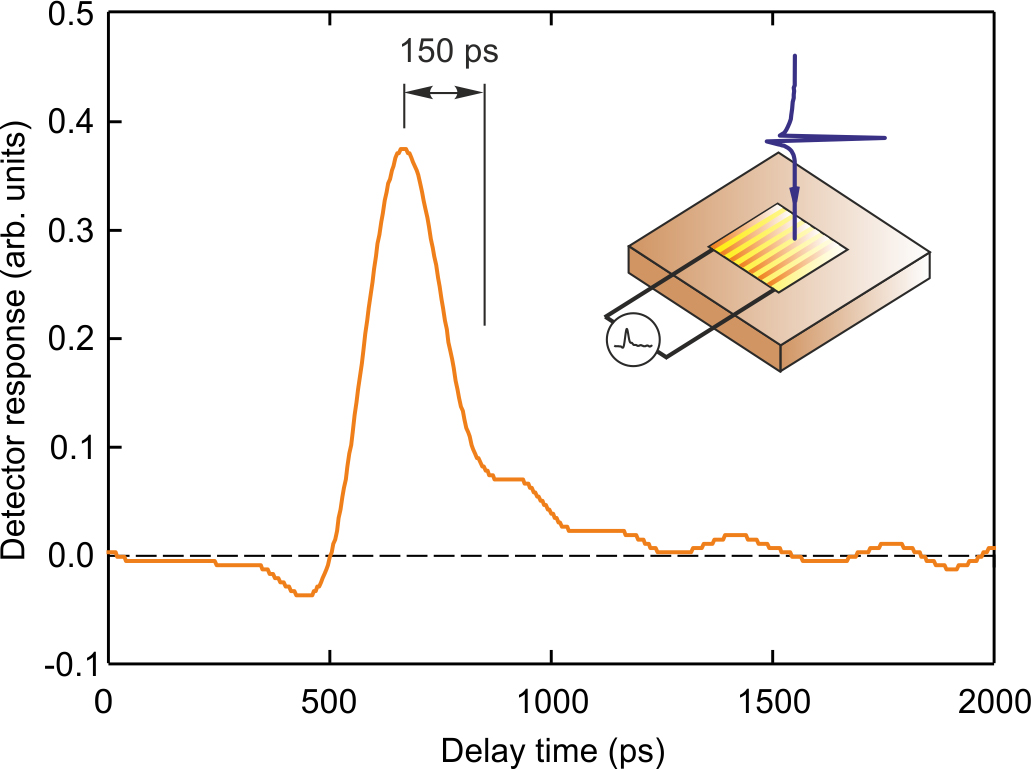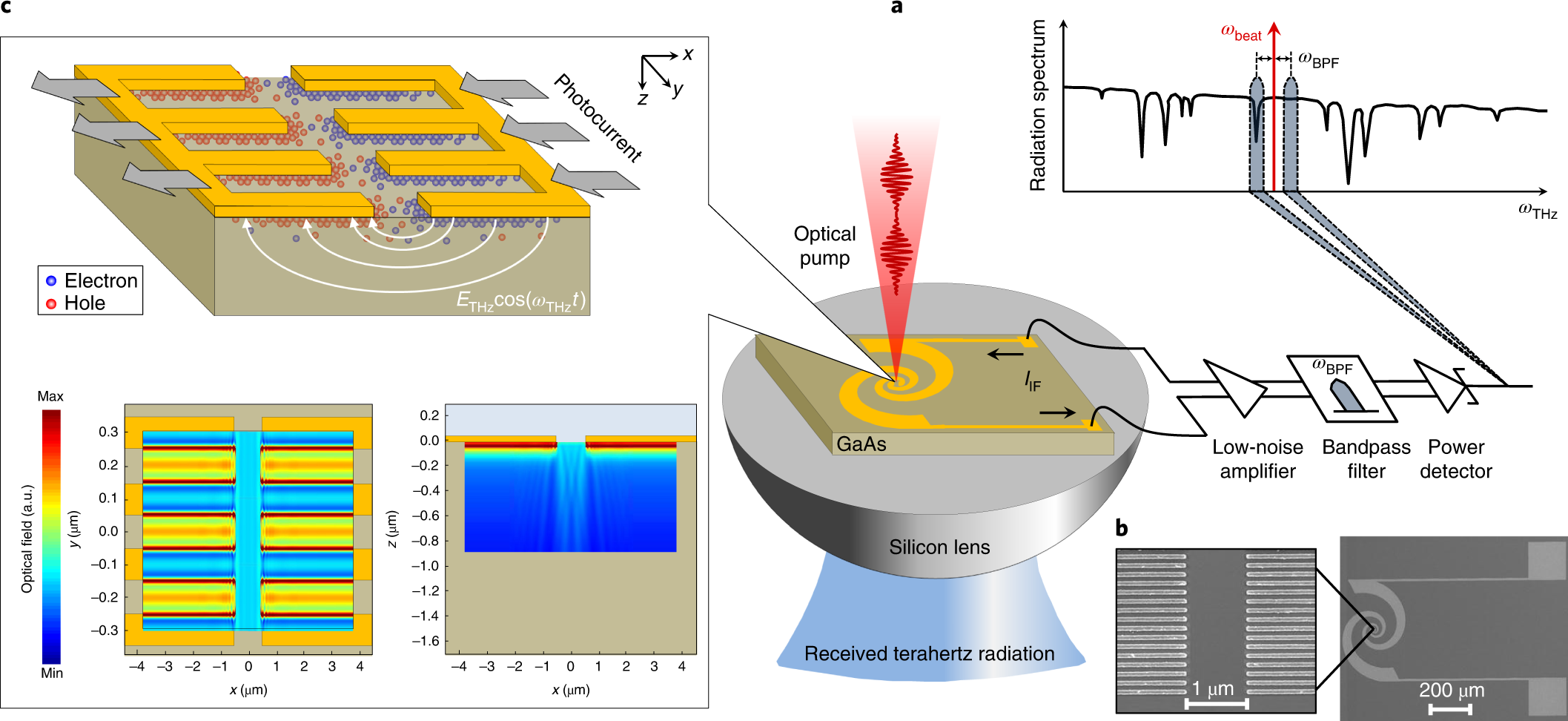Contents

Source: TeraSense
The Basics of Terahertz Detection
Introduction to Terahertz Radiation
Terahertz radiation falls within the frequency range of approximately 0.1 THz to 10 THz, corresponding to wavelengths from 3 mm down to 30 μm. These frequencies are challenging to detect using conventional electronics, leading to the development of various techniques for terahertz detection, including photonics-based methods.
Photoconductive Antennas
Photoconductive antennas are instrumental in both generating and detecting terahertz waves. These antennas consist of metallic strips with a photoconductive switch between them. By employing optical probe pulses on the photoconductive switch while the terahertz wave passes through, the resulting voltage between the electrodes is proportional to the electric field of the terahertz wave. This technique, known as electro-optic sampling, enables the detection of terahertz waveforms.
Detection with Nonlinear Crystals
Nonlinear crystal materials allow terahertz waves and optical fields to interact, resulting in sum or difference frequency generation. By detecting the optical product wave, or changes in optical phase caused by terahertz radiation, terahertz detection can be achieved using this method.
Bolometers
Bolometers are devices that detect radiation based on the heat generated upon absorption. This principle can be extended to terahertz waves, with materials like indium antimonide (InSb) bolometers being utilized. Typically, bolometers measure the energy of terahertz pulses, providing information on intensities rather than wavelengths or phases.
Conclusion
Terahertz detection plays a crucial role in various applications such as spectroscopy, communications, and imaging. By utilizing techniques like photoconductive antennas, nonlinear crystals, and bolometers, researchers and engineers can harness the potential of terahertz radiation for a wide range of technological advancements.

Source: Nature
Feel free to comment your thoughts.



